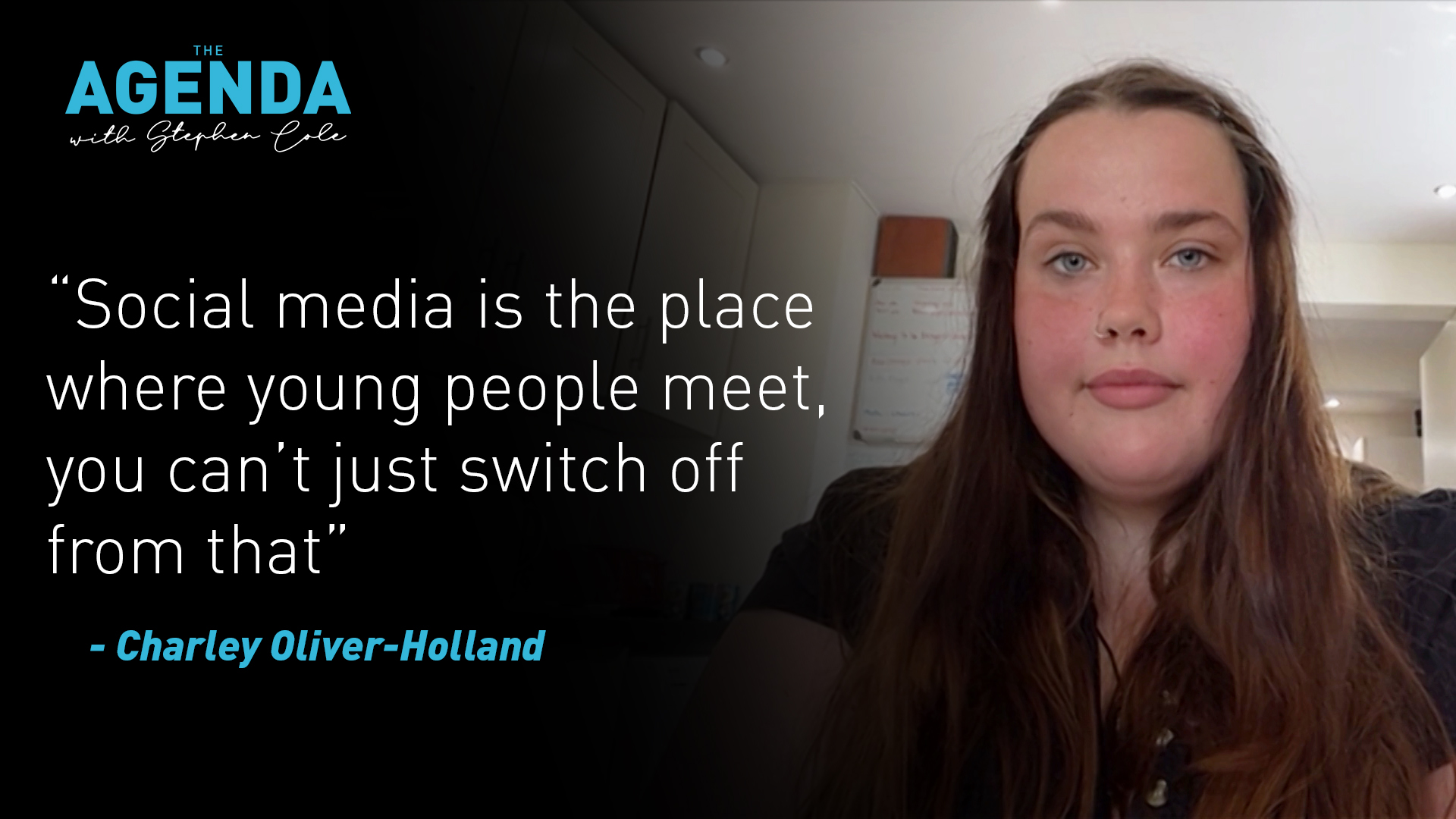Hey guys, welcome to Reality Check. Every four years, we celebrate the Olympic Games, a singular event that unites us and reminds us, even if for a brief moment, that there's great beauty in this world.
On the beam, the biggest cheer-leader for Chinese gymnast Guan Chenchen was the American all-around champion Sunisa Lee. "I love her so much" as Lee tweeted. The two apparently bonded over the years as competitors but also friends.
Out of respect, Wang Shun, the new 200-meter individual medley champion, bowed to the guy he just defeated, Hungarian swimmer and five-time Olympian Cseh László, whose entire Olympic endeavor had been overshadowed by Michael Phelps and now at his last Olympic swim, by Wang Shun himself.
And let's not forget Su Bingtian, the fastest Asian man in the world. Su's trainer is famous American coach Randy Hungtington, who helped him to get to where he is today. And likewise, Chinese coaches helped other national teams train too in volleyball, gymnastics and other disciplines.
A hug...a hand-shake, an exchange of pleasantries. These are beautiful games. If only governments could come together in politics athletes do in sports, our world would have been quite a place.
In reality, there are media stories covering the Olympics from a political angle. For example, a New York Times article says "The Chinese Sports Machine's Single Goal: The Most Golds, at Any Cost," making it look as if these Chinese athletes were robots who can't think or feel for themselves.
Perhaps these Western reporters missed out on all the fun.
One may also want to know that Su Bingtian holds, in fact, a PhD in sports science. Chinese shooter Yang Qian studies at the prestigious Tsinghua University. And half of the Chinese Women's Volleyball team have a master's degree. Plus, those who suggest that elite sports in the Olympics and grassroots fitness are two different things should take a closer look at some facts.
For young kids, they need a role model - a Su Bingtian, or a Liu Xiang or an Alex Morgan or a Caeleb Dressel - to want to become one. Elite sports inspire grassroots participation. The two complement each other.
In China, for example, now more young Chinese than ever go to the gyms or participate in sports regularly. In 2020, fitness and sports in China is a growing 7-billion-dollar industry.
Back to the Tokyo Olympics. Again, they are beautiful games. Amid a global public health crisis and a world divided by geopolitics, they reminded us, every now and then, that our common humanity matters more than our differences.
Editors: Xu Shuo, Liu Yuqing
Designer: Qi Haiming
Videographer: Wang Yilin
Producer: Wang Ying, Zhao Yunjie
Supervisor: Mei Yan
By AFP
Published August 8, 2021
Fireworks went off over the Olympic Stadium at the end of the closing ceremony. - Photo: © AFP, Mohd RASFAN
Talek HARRIS
The Tokyo 2020 Games were declared closed on Sunday by IOC chief Thomas Bach, who said it had been the “most challenging Olympic journey” after a year’s pandemic delay and threats of cancellation.
Bach called the Tokyo Games “unprecedented” as he addressed the 68,000-seat Olympic Stadium, which was empty of spectators as Japan battles a record coronavirus outbreak.
“In these difficult times we are all living through, you give the world the most precious of gifts: hope,” the International Olympic Committee president told athletes at the ceremony.
“And now I have to mark the end of this most challenging Olympic journey to Tokyo: I declare the Games of the 32nd Olympiad closed,” Bach said.
It marked a low-key end to an extraordinary Olympics that have mostly played out in empty venues with only athletes, team officials and media present.
Athletes have lived in strict biosecure conditions with social distancing at the Olympic Village and instructions to wear masks unless eating, sleeping, training or competing.
As the Olympic flag was passed to Paris mayor Anne Hidalgo for the 2024 Games, live footage showed cheering crowds in the French capital — in stark contrast to Tokyo.
Bach has described how the IOC considered cancelling the Olympics and claiming the costs on its insurance policy but said officials ploughed ahead with holding the Games “for the athletes”.
– ‘Our athletes moved people’ –
On Sunday, the climax of the biggest sports event since the pandemic, Kenya’s Eliud Kipchoge won the men’s marathon and the USA edged China at the top of the medals table.
The United States scored victories in volleyball, track cycling and basketball to top the tally with 39 gold medals, just one ahead of China.
The Olympics were plagued by low Japanese support as they went ahead with Tokyo and other regions under a state of emergency and with infections multiplying to new highs.
But Japan’s record haul of 27 golds to finish third on the table has won hearts. Britain were fourth with 22 and the Russian Olympic Committee, the team for Russian athletes after their country was banned for systematic doping, were fifth with 20.
“We believe our athletes’ earnest spirit and all-out performance moved people,” said Tsuyoshi Fukui, chef de mission for the Japanese team.
A succession of big names have failed to perform in Japan, where new sports skateboarding, surfing, sport climbing and karate brought young new stars to the fore.
But marathon world record holder Kipchoge showed his class on Sunday, kicking in the closing stages and clocking 2hr 08min 38sec to retain the title he won in 2016.
“I know there were a lot of people against holding this Olympics due to the coronavirus,” said a flag-waving, 47-year-old fan on the marathon route who gave his name as Tsujita.
“But I am glad it took place. This was a once-in-a-lifetime experience for everyone.”
The marathon, moved north to Sapporo to avoid Tokyo’s summer heat, was one of the few events to allow spectators.
– Trans athletes, ‘twisties’ –
Fears of a major outbreak among the mostly vaccinated Olympic athletes and officials proved unfounded and 430 cases were picked up during the Games, including 32 in the Olympic Village.
However, the virus has lurked as an ever-present threat. Victory celebrations were muted, with lonely laps of honour. But the athletes’ emotions were on full view.
Superstar gymnast Simone Biles provided the most jaw-dropping moment when the American abruptly pulled out of competition over a bout of the “twisties”, a disorientating mental block.
Biles, widely acknowledged as the greatest gymnast in history, recovered sufficiently to claim a redemptive bronze medal in her final event, the beam.
Weightlifter Laurel Hubbard of New Zealand became the first openly transgender woman to compete at the Games and Canada’s Quinn became the first openly transgender Olympic medallist, with gold in the women’s football.
In other highlights, US swimmer Caeleb Dressel assumed the mantle of Michael Phelps with five gold medals and Jamaica’s Elaine Thompson-Herah achieved a sprint double on the track.
Among the final events on Sunday, Jason Kenny claimed the men’s keirin to become the first Briton to win seven Olympic titles.
The USA started the day two golds behind China but the women’s basketball and volleyball titles and track cyclist Jennifer Valente’s omnium victory put them top of the table.
Tokyo will host the Paralympics from August 24. The Olympic circus will reconvene in just six months when Beijing, faced with boycott threats and a renewed coronavirus emergency, holds the Winter Games in February.
Read more: https://www.digitaljournal.com/world/most-challenging-tokyo-olympics-declared-closed/article#ixzz731Xz87KW
Tokyo Olympics: COVID-19 restrictions, no fans and more questions for the IOC
Though COVID-19 and public outrage loomed large, Tokyo 2020 still possessed the Olympic magic we all know and love. But the IOC won't always be able to hide behind the athletes' brilliance, writes DW's Oliver Moody.

"So what are you actually going to do in Tokyo?" It was a fair question.
The buildup to this year's Olympic Games was filled with uncertainty, and it was no different for journalists like me traveling to Japan. Would we be able to move around the city? To talk to people? Would we even be able to get into the events themselves?
Before we even got that far, there was a series of Tokyo 2020 systems and apps to navigate, about half of which actually seemed to work. The fear of getting turned back at the airport over an unchecked box felt terrifyingly real in the weeks before departure.
So when my doctor asked the question as he was giving me my COVID-19 vaccine, I didn't know what to say. On top of the pragmatic issues, some even more basic dilemmas had been swirling around my head. Should I even be going to Tokyo when the locals will be shut out? Should the Games be taking place at all?
Most of the restrictions were overcome — some relatively easily, others with a fair degree of difficulty and a scarcely believable quantity of deodorant. But it is perhaps unsatisfying to say that I still don't have a firm answer to those last questions.
The role COVID-19 played during the Olympics
Coronavirus case numbers exploded here during the Games, reaching record levels in Tokyo since the Olympics got underway. But the relatively low number of cases among people involved in the Olympics, and the fact that cases started rising rapidly before most of us had arrived in Tokyo, suggests that has more to do with the delta variant than the influx of foreigners.
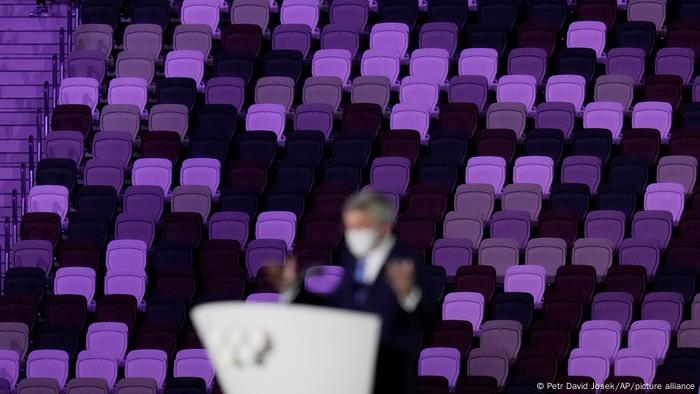
Empty stands serve as a backdrop to IOC President Thomas Bach at the Opening Ceremonies
The ban on spectators is a travesty that truly eats away at the soul of the Games, and laying eyes on the empty fan park still standing next to Tokyo Bay is a brutal reminder of that. But, in this case, disappointing hundreds of thousands of locals with tickets meant giving joy to hundreds of millions of viewers around the world.
Athletes who trained their whole lives for this moment but then tested positive for COVID have been locked up heartlessly. Others have been able to fulfill their dreams, some with their very last chance at Olympic glory. Seeing intense euphoria and acute physical pain simultaneously etched into the faces of American swimmer Caeleb Dressel, British BMX cyclist Bethany Shriever and Ugandan steeplechase runner Peruth Chemutai in the flesh and knowing that thousands of hours of grinding away just paid off for them perhaps changes one's perspective.
The Japanese people themselves are also conflicted on the issue of the Games. At the opening ceremony, I could hear the demonstrators outside railing against the organizers who showed them so little respect. I've walked through protests to get into the Olympic Stadium in the last few days, and seen banners with slogans like, "Stop playing Games! Save lives, not the Olympics!" while others tell IOC President Thomas Bach, in no uncertain terms, to get out of Japan.
This shows unmistakably that the anger has not subsided. But I've also seen people lining up for photos with the rings, not 50 meters away from the protests. I've seen crowds form on a bridge as people tried to get a good view of the BMX events. I've seen people wearing Team Japan replica shirts all over town. They are all still part of the spectacle, even if they're not allowed to spectate.
Just before the start of the Games, I spoke to a pair of tour guides, who gave me almost identical quotes. "The Olympics should have been canceled because of the pandemic," they agreed. "Now that it's happening, though, I'll probably watch some of it."
If any of this sounds inconsistent, even hypocritical, ask yourself what any normal person is supposed to do in these circumstances.
Questions asked of IOC, Japanese government
What is clear is that none of these things have been treated with the gravity they deserve by the powers that be. The IOC makes grand claims of bringing the world together and giving athletes their big moments, but the truth of the matter is that hosting the Tokyo Olympics in spite of everything is an act of protecting revenues. The vast majority of the IOC's income stems from broadcast and sponsorship deals associated with the Summer and Winter Games. That's why we're all here.
The Japanese government meanwhile, staring down the barrel of billions in wasted investment and further bills to come in the event of cancellation, instead followed the gambling addict's logic that eventually their luck just had to change. To an extent, it has.
As increasingly seems to be the case with the Olympics, the unpalatable realities behind the scenes are countered by the brilliance of the performances and the compelling stories of previously unknown athletes who shoot to stardom over 16 breathless days. For a couple of weeks, we can intermittently forget how inherently wrong the direction the Olympic movement is heading in feels these days. No doubt the host nation's record-shattering performance in the medal table has helped the locals focus on the positives.

IOC President Thomas Bach during the Opening Ceremony of the Tokyo Olympics
But the gap between perceptions of athletes and authorities grows ever larger. That was made abundantly clear by the IOC's lumbering, reluctant response to the case of sprinter Krystsina Tsimanouskaya, who was kicked off Belarus' Olympic team for refusing to compete in the 4x400-meter relay.
And already they're having to bat away questions about Winter Olympics in Beijing, which start in just six months. They have already been dubbed "The Genocide Games" due to the Chinese government's treatment of its Uyghur population. Tokyo can almost breathe a sigh of relief, but scrutiny of the IOC is likely to ramp up even further in the coming months.
If one moment sums up the Tokyo Olympics, it was a scene immediately after the women's park skateboarding final. We had just witnessed an astonishing performance from a group of mostly teenaged athletes who, on top of their phenomenal skills, displayed compassion, togetherness and a joie de vivre that is often lacking in the seriously competitive forum of the Games. They were supremely talented, genuine, and fun.
And right there at the bottom of the press tribune, posing for photos and basking in their reflected glory, was Thomas Bach. The man who externally speaks almost exclusively in platitudes but internally demands fierce loyalty from his IOC subjects; the man currently leading the organization's drive for more profits and less humanity. These are the two sides of the Olympic coin.


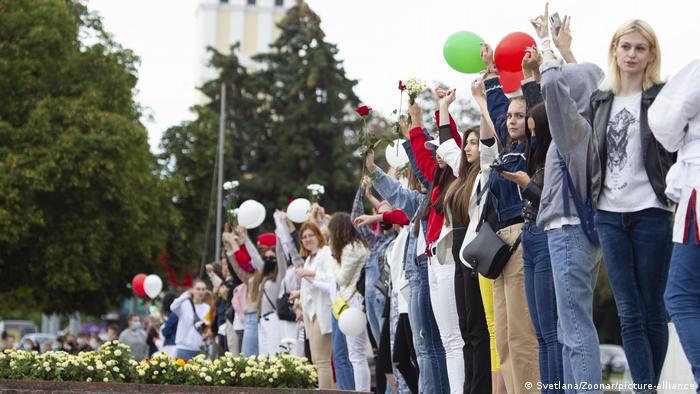

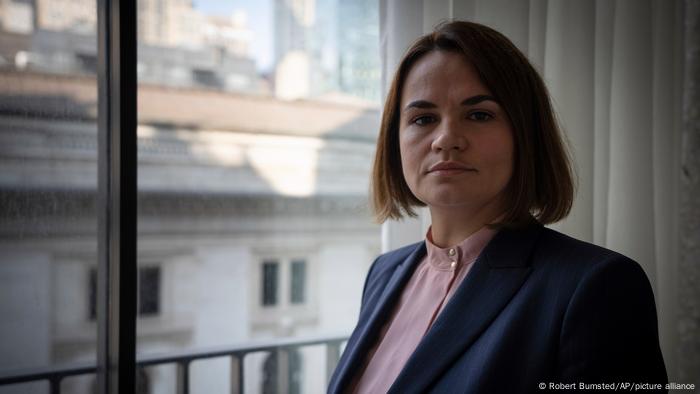
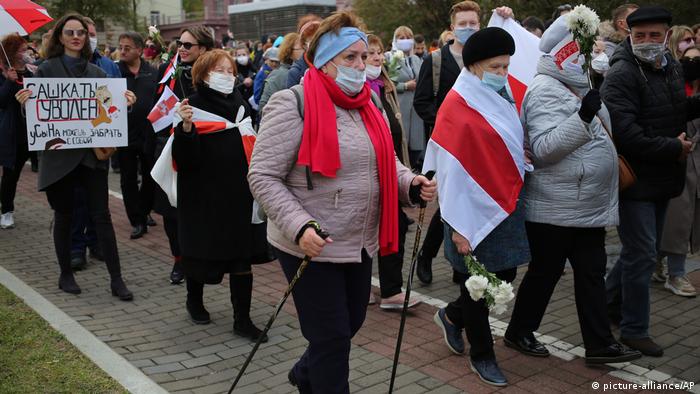

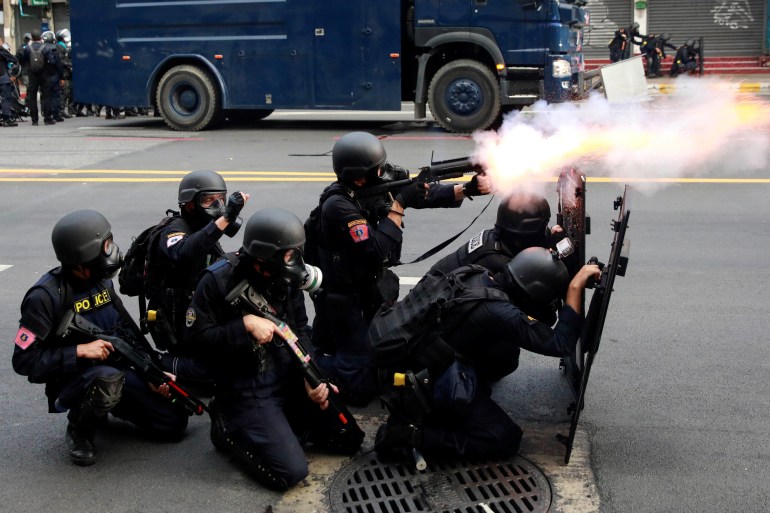








 A bird eats the seeds of a dried flower on the farm of Liset Garcia, in Reedley, California Robyn Beck AFP/File
A bird eats the seeds of a dried flower on the farm of Liset Garcia, in Reedley, California Robyn Beck AFP/File










